Submarine C-189
One of the hundreds of design bureaus was TsKB-18, where a completely new type of submarines was developed, called Project-613.
In 1950, the first submarine of the new project was launched, which became the most massive type of torpedo submarines in the post-war stories THE USSR. In total, 1951 submarines of this project in the USSR and 1958 in China were built from 215 to 21.
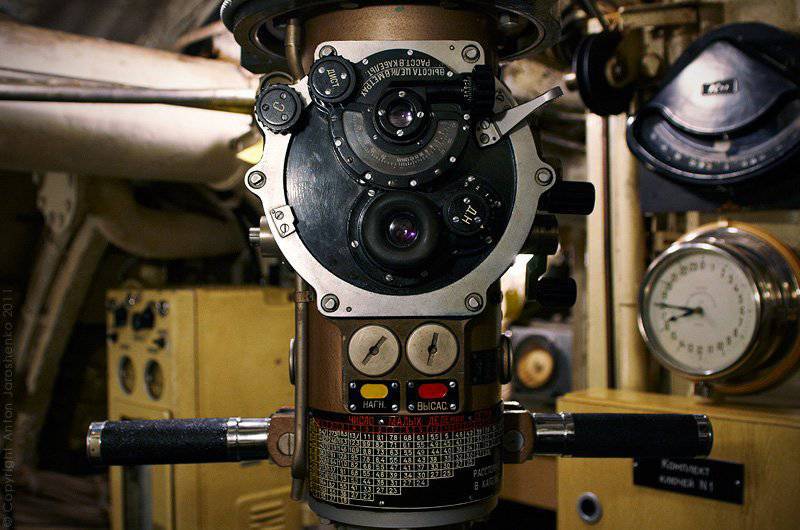
The 189 C-613 boat was laid at the 31 Baltic Plant in March 1954 and launched on September 4. In addition to military campaigns, she took part in the testing of new samples weapons at the landfill of Lake Ladoga. Until 1988, thousands of sailors, foremen and officers went through a diving school. After serving almost 35 years, she was decommissioned fleet in 1990 and later, in 1999, it sank in the Merchant Harbor of the port of Kronstadt, plunging to the ground at the pier due to loss of buoyancy.
In 2005, at the expense of the businessman and former submariner Andrey Artyushin, the submarine was raised and docked at the Kanonersky plant, where it found a rebirth. After repairing and restoring interiors, a private museum was established at its base, which opened on March 18 on the quay of Lieutenant Schmidt in St. Petersburg.
3. In 1942, designers from TsKB-18 began work on a project for a new medium submarine, designed to replace the Schuka-type boats. The project received the number 608, VN Peregudov was appointed chief engineer. In 1944, both projects were submitted to the Shipbuilding Department, but did not receive support due to non-compliance with the requirements for armament and range.
30 July 1944, the German U-250 submarine type VIIC was sunk in the Gulf of Finland. The boat that sank at a depth of 27 meters in October was lifted and towed to Kronstadt. The People's Commissar of the Navy N. G. Kuznetsov issued an order in January 1945, according to which work on the 608 project ceased, and the creation of the 613 project began, which should be based on the design of the German boat, but with a slight increase in displacement from 770 to 800 tons . After the end of the war, Soviet specialists got acquainted with unfinished German “electric boat” type XXI, which were captured in the shipyards of Danzig. In the spring of 1946, four extended type XXI boats were received from the UK. The sea test of these ships resulted in a complete change in the technical task of the 613 project in August 1946, and the type XXI was taken as the basis for a new version of the draft of the main Soviet post-war submarine. The draft design was completed in October 1947 of the year, the working drawings were ready by August 1948 of the year.
The construction of the submarines of the 613 project was carried out from 1950 to 1957 years. Annual production reached 73 units.
4. The 613 project has a two-part design. All-welded durable housing with external placement of frames is divided by waterproof bulkheads on 7 compartments - 2 torpedo residential, 2 battery residential, central post, diesel, electromotor
5. Descent or, if I may say so, the "main entrance" to the submarine
6. Immediately from the entrance we get into the fourth compartment, which is a battery. It must be said that each of the compartments of any submarine has much more missions than its name suggests.
So, in the 4-m (battery) compartment, 112 46SU batteries (below the deck level, in the accumulator well), galley, cabin-company and midshipman cabins, electro-compressor, high-pressure air cylinders, etc. are located.
7. In the galley there are even stocks of dried vobla ....
8. Latrine
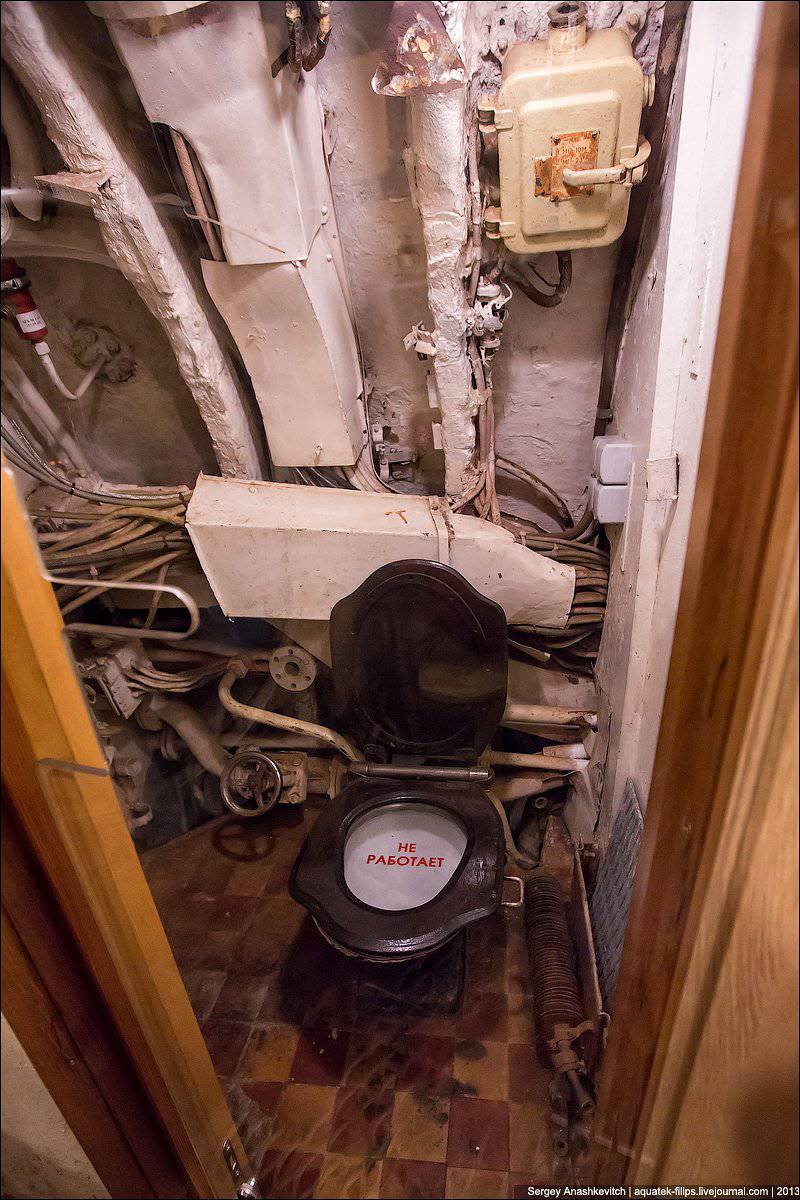
9. The internal space in the submarine is very limited and a tall person is not comfortable enough here. It is for this reason that in the museum many pipes and communications at the level of the head are covered with soft bright mats. And it’s not for nothing ... I also made fun
10. Go to the fifth compartment - diesel.
11. Dive Camera Control
12. In the diesel compartment are 2 diesel engines with control devices and maintenance systems; fuel tank, diesel 2 and marine fans.
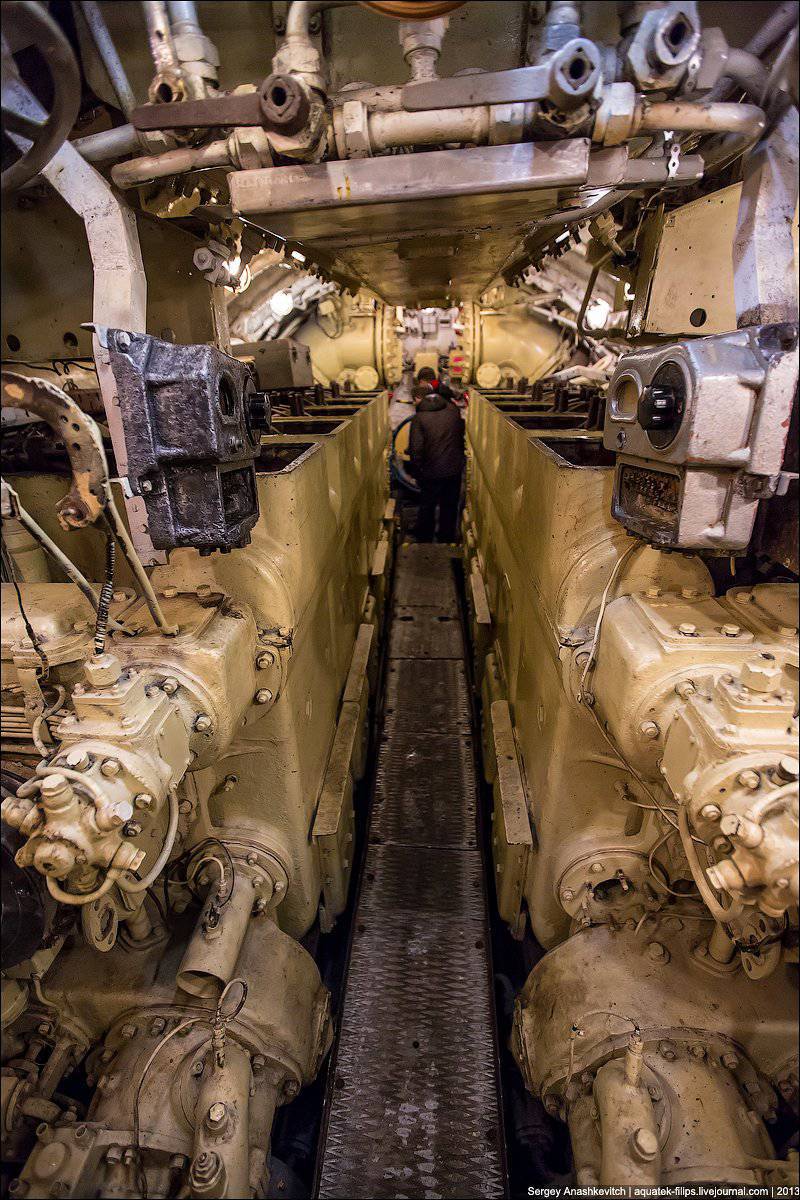
13. The basis of the power plant were two two-stroke diesel engines of the 37D model. In cruising position, they accelerated the boat to a maximum speed in the 18,25 node. The economic surface speed was 8-10 nodes. The fuel supply was enough for 8580 miles with 10 nodes or 13000 miles with 8 nodes.
In addition, the boat has two main electric motors of the PG-101 model, which had an 1350 power. with. and providing a full submerged speed in an 13,1 node that could be maintained for an hour. Two electric motors of the economic course of the PG-103 model had a power of 50 l. with. and accelerated the boat under water up to the speed of the 1,97 node. On economic electric motors, the battery charge was enough for 352 miles of underwater travel.
14. Narrow passages between the compartments. Each compartment is sealed and, if necessary, can be almost instantly isolated from the rest. 54 (!!!) crew member worked and moved here
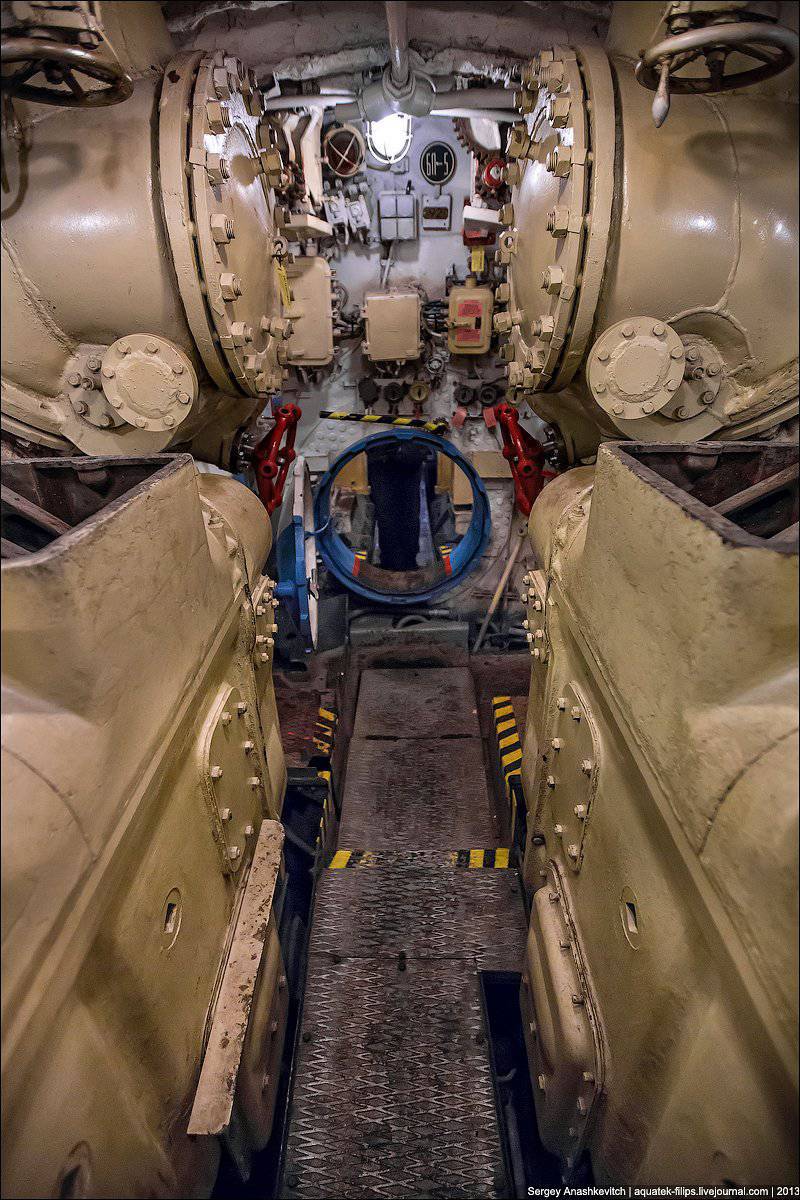
15. The sixth compartment is an electromotor and at the same time being residential. Here are the 2 main rowing motor with the main running stations, two economic stroke engines, a volumetric fire extinguishing station and 6 personnel suspension beds.
16. What a lot of boat - it is a variety of valves.
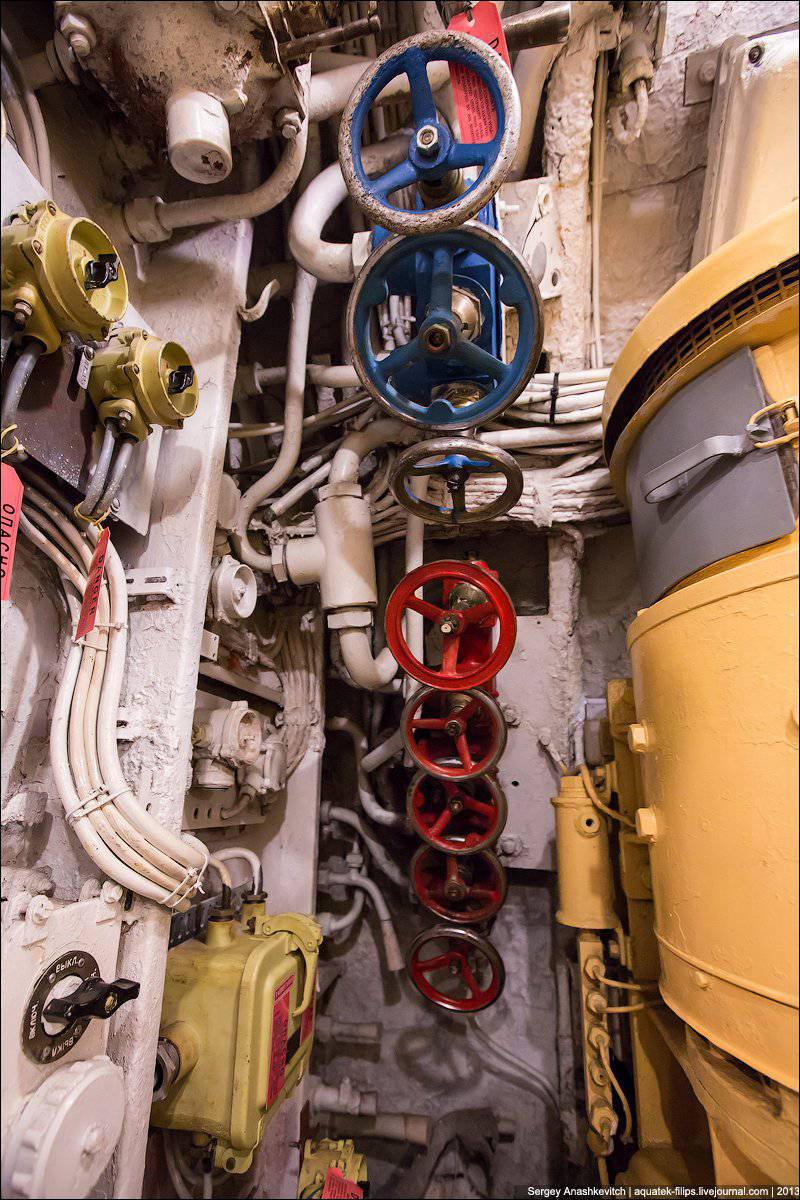
17. The seventh compartment is a torpedo aft and at the same time residential. There are 2 torpedo tubes with firing control devices, manual vertical and stern horizontal rudder control drives, a hydraulics pump unit, a bilge pump, and 6 suspension beds. Here is an emergency hatch
18. Inside the torpedo tube.
Torpedo armament boats were 6 torpedo tubes caliber 533 mm: 4 bow and 2 fodder. For nasal devices, 1 spare torpedoes were stored on racks in the 6 compartment. Instead of 10 bow torpedoes, the boat could take 20 mines such as AMD-1000: two mines in each vehicle and 12 mines on racks. Torpedo shooting was carried out from depths to 30 meters.
19. Communications
20. Bulkhead between compartments
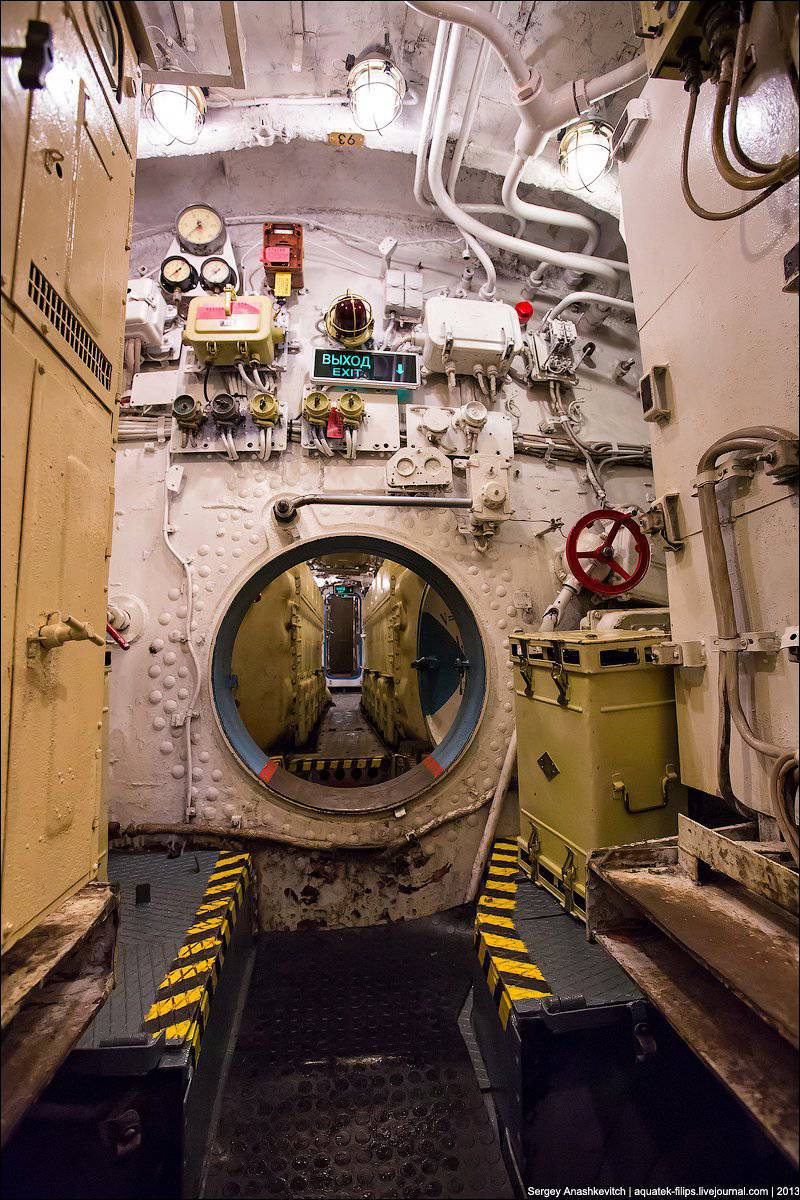
21. In the nose torpedo compartment (first) there are four torpedo tubes with firing control devices. There is also a foam quenching station, horizontal bow rudder drives, a torpedo loading hatch, shelves with spare torpedoes and 16 suspension beds.
22. The bunks are located directly above the torpedoes.
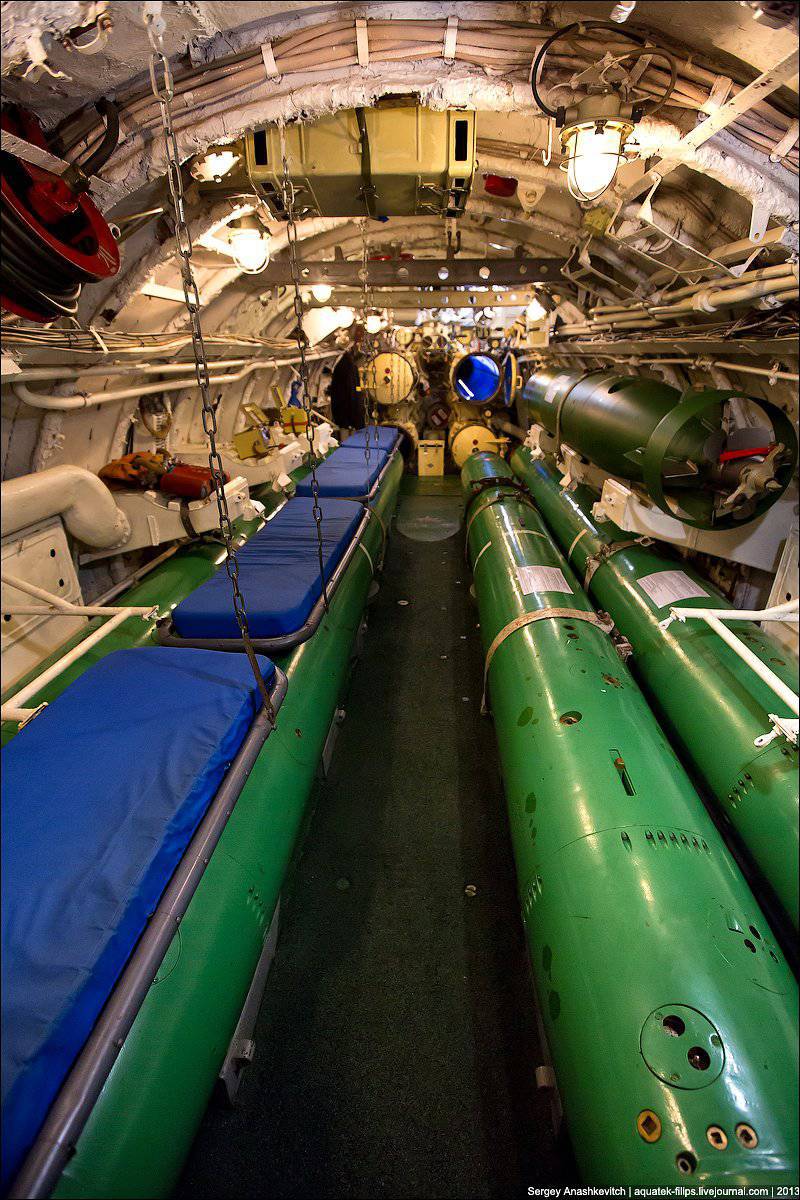
23. Steering controls
24. The second compartment is a battery and at the same time residential. In addition to the 112 rechargeable batteries, the cabins of the company and the officers' cabins, felling of radio communications and OSNAZ and high-pressure air tanks are located here.
25. Radio box The complex of electronic equipment of the project 613 in the process of construction and operation has repeatedly changed. Submarines received the flag radar radar detection of surface targets. The Tamir-5L sonar and the Mars-24KIG noise-finding station (later replaced by the Phoenix) ensured the detection of targets in the submerged position.
26. The third compartment is the central post (or the main command post). Hydroacoustic felling and radiometrist, navigator fencing, periscope, course control, depth, immersion and ascent control posts, gyrocompass, torpedo firing apparatus, lifting and mast retractable devices, main drainage pump, artillery rake, provision storerooms, latrine and lower manhole hood are located here.
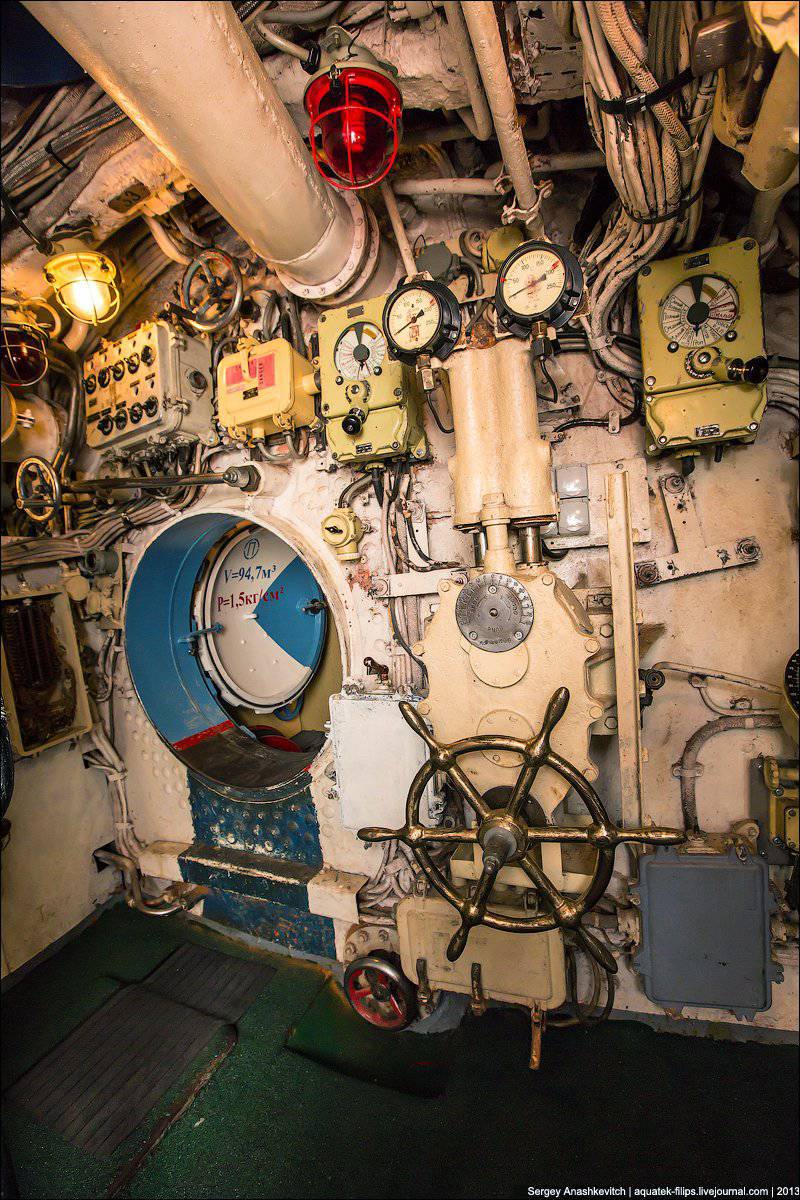
27. Ship hours. They are slightly different from the usual to us - here the scale consists of the 24 clock, and not of the 12 ...
28. Shturmanskaya enclosure. Here is the laying of the course of the submarine
29. Infinite blue-red vents
30. Periscope
31. Inclinometer The device is very similar to the usual construction level.
32. The further development of the 613 project was the 633 project, there were significantly fewer such boats built - only 20 ...
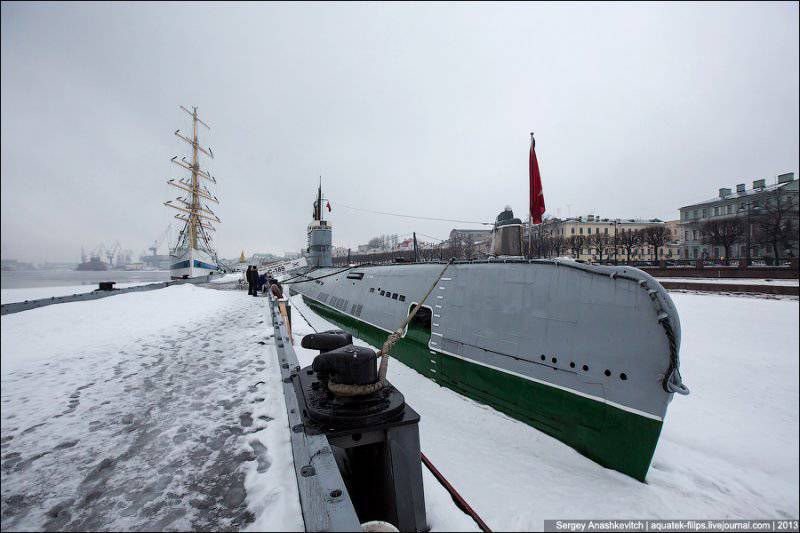
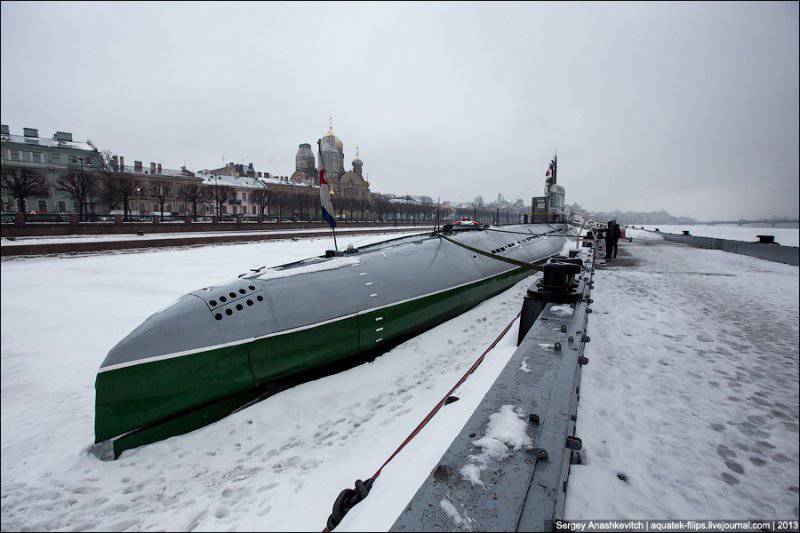
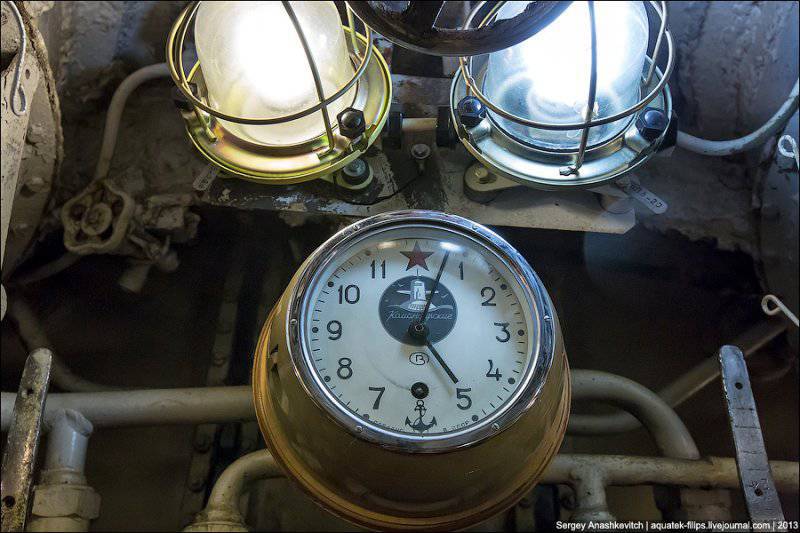
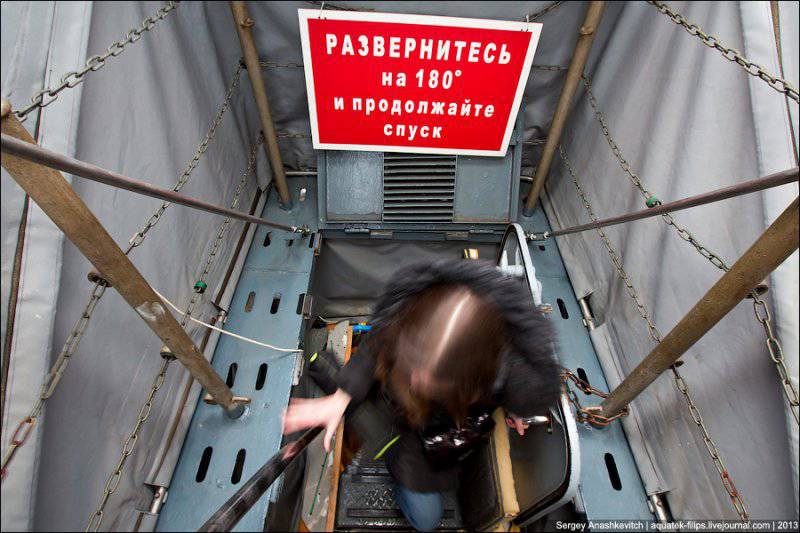
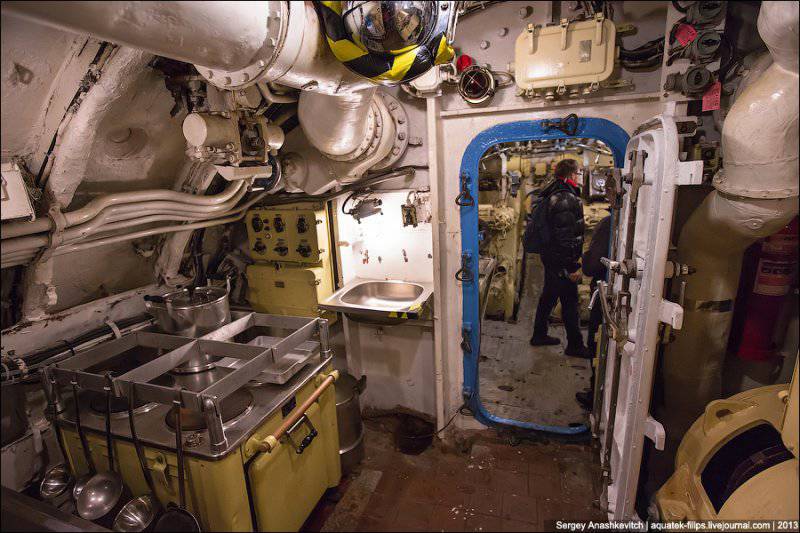
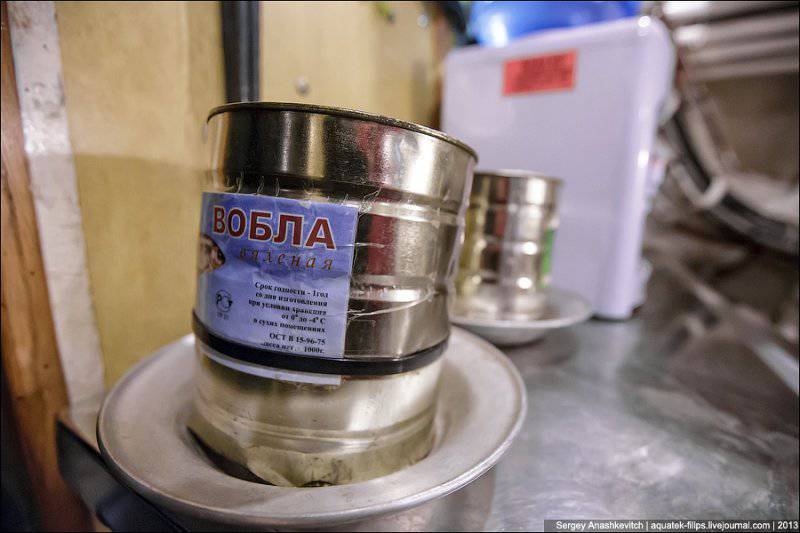
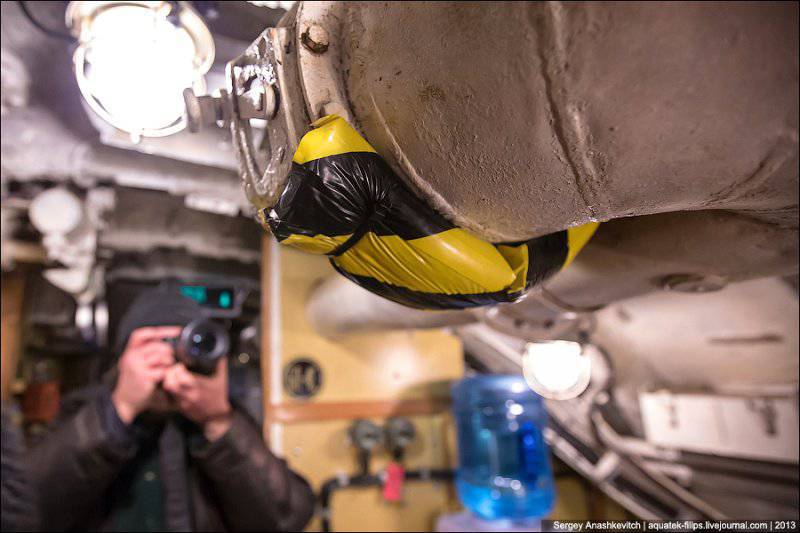
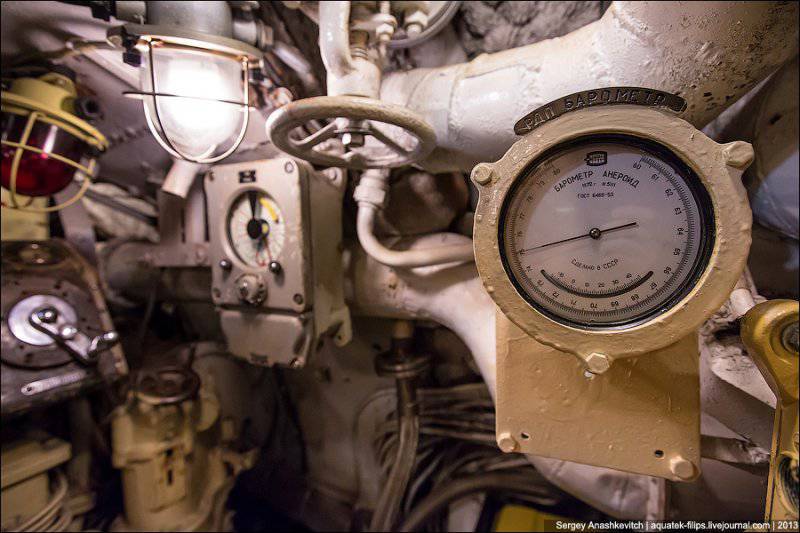
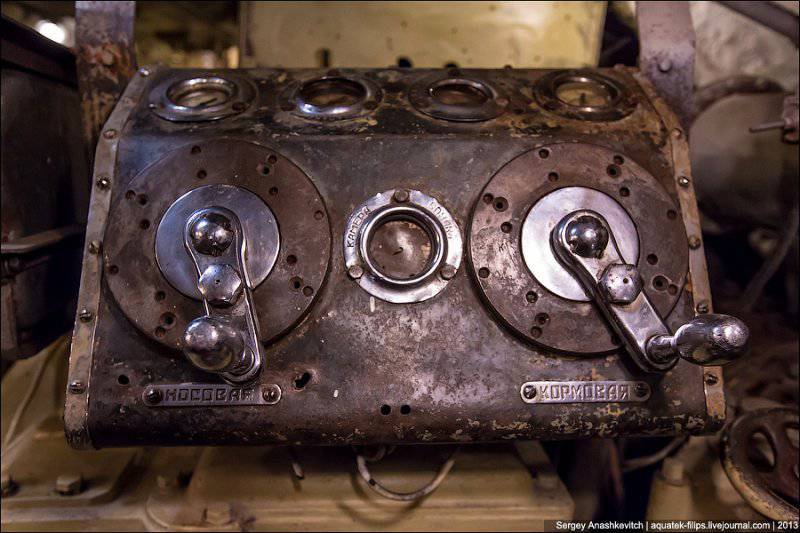
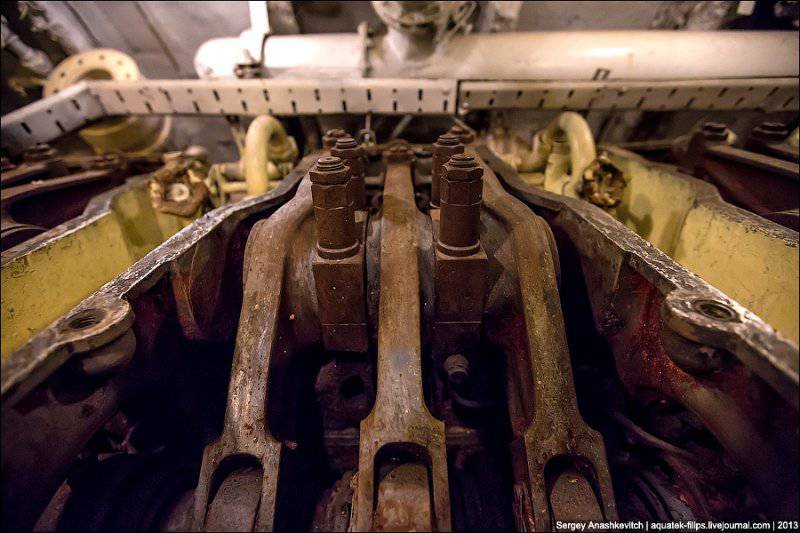

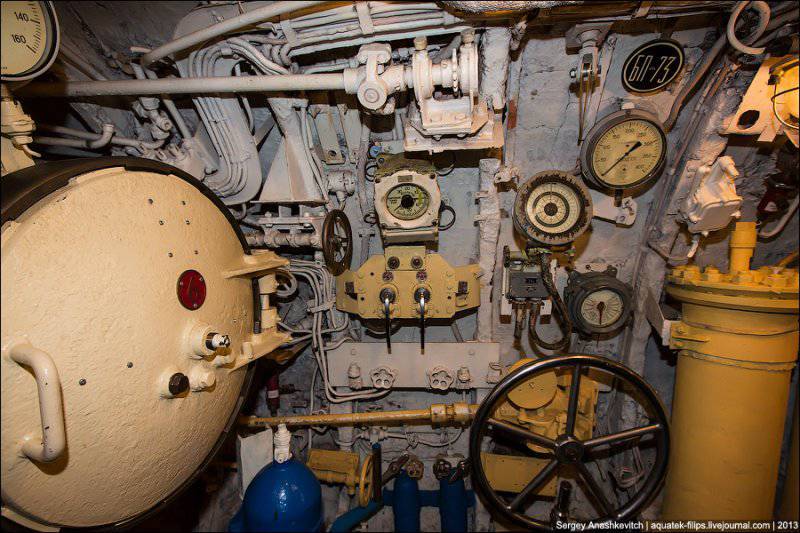
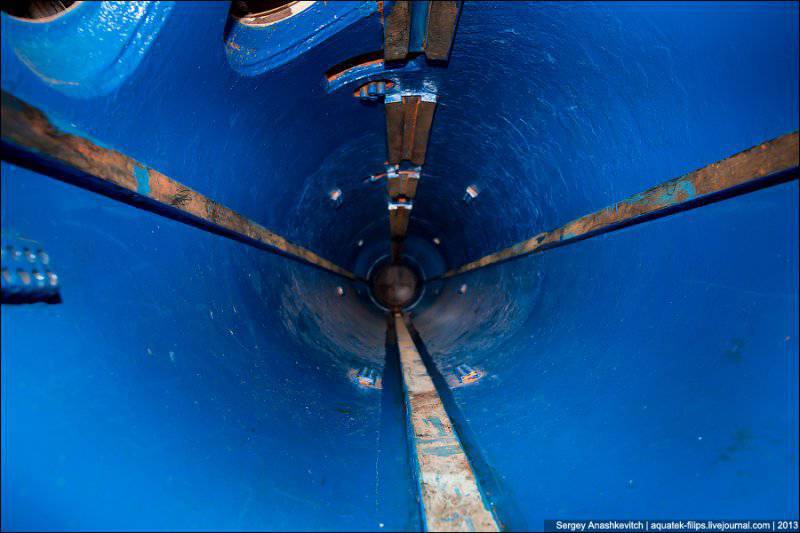
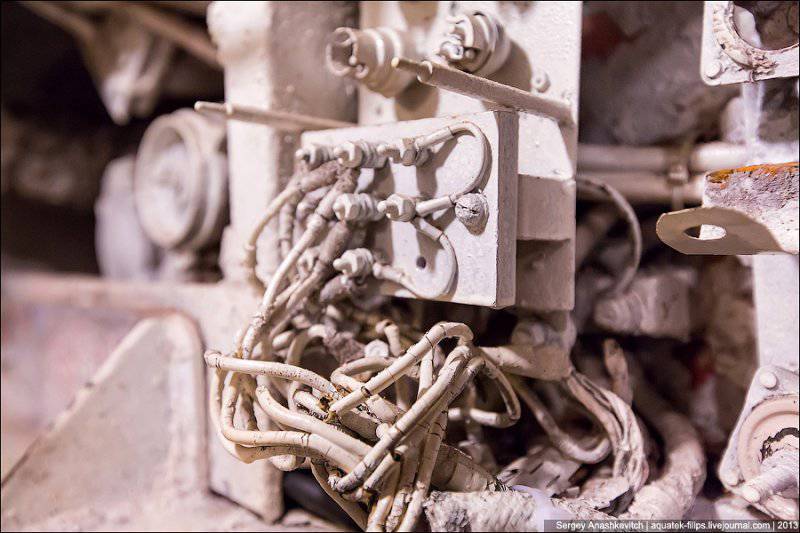
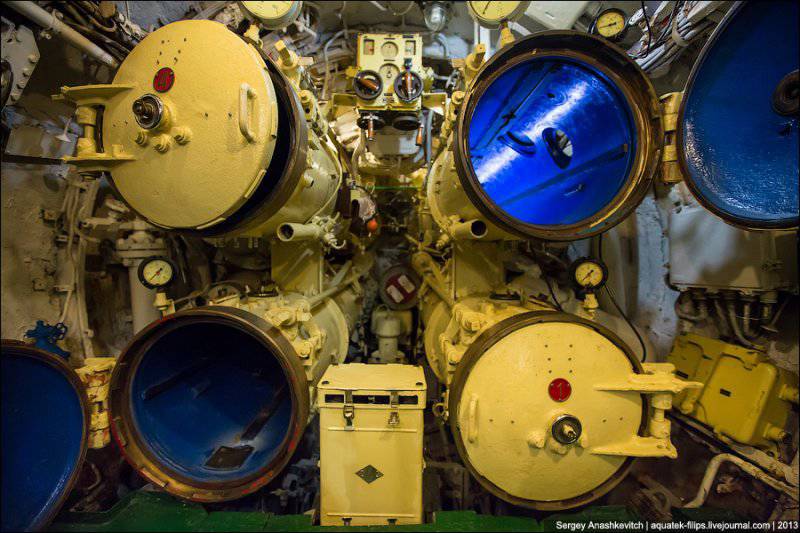
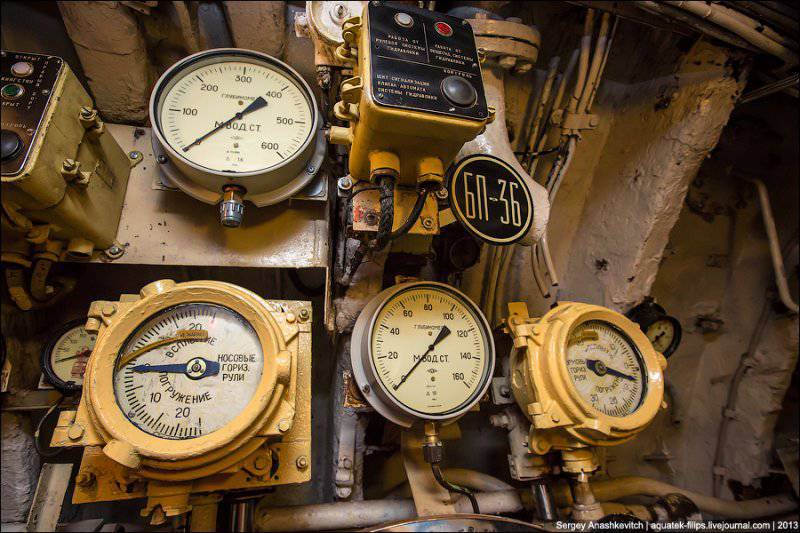
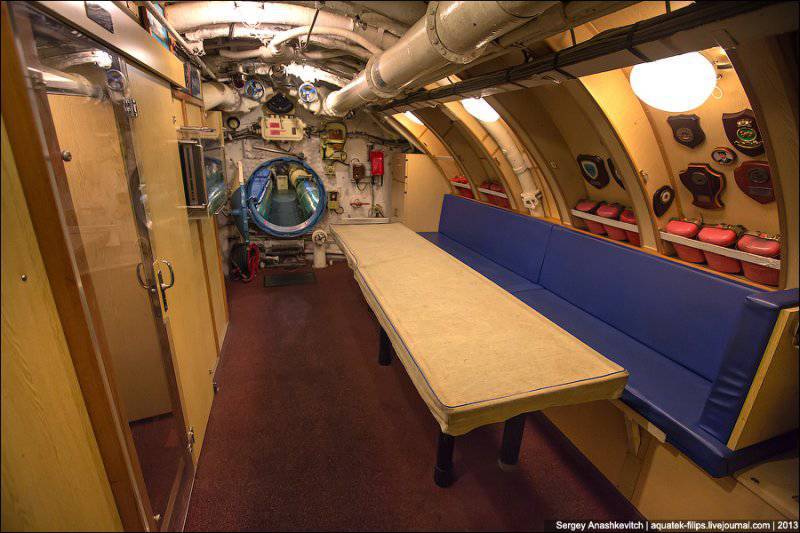
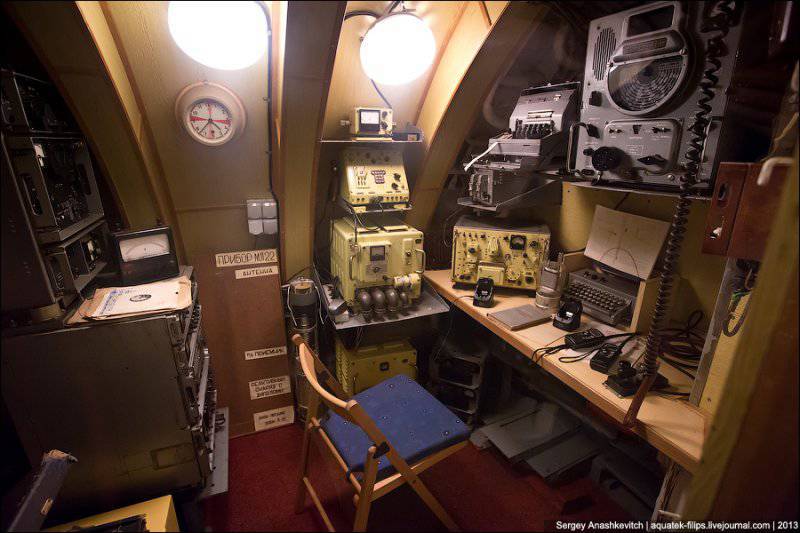
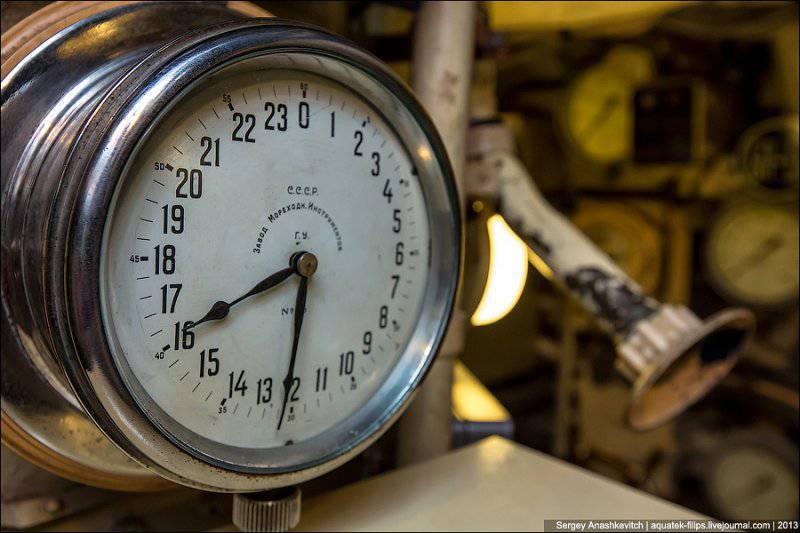
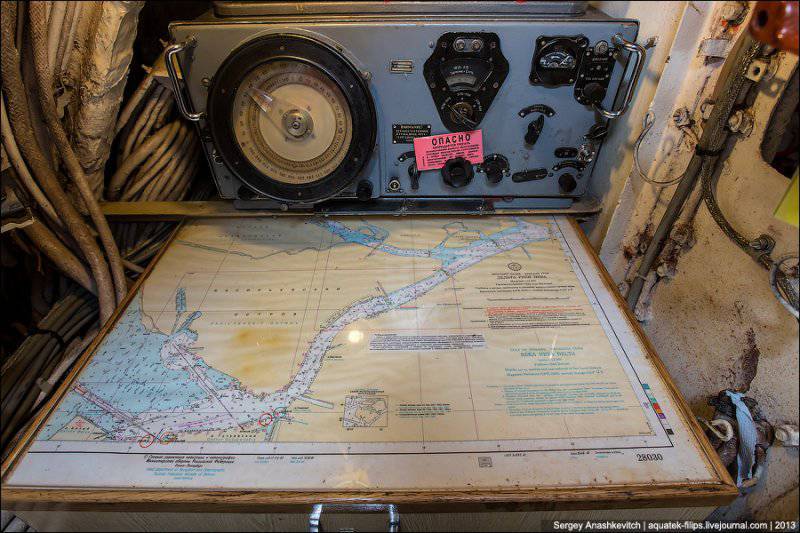
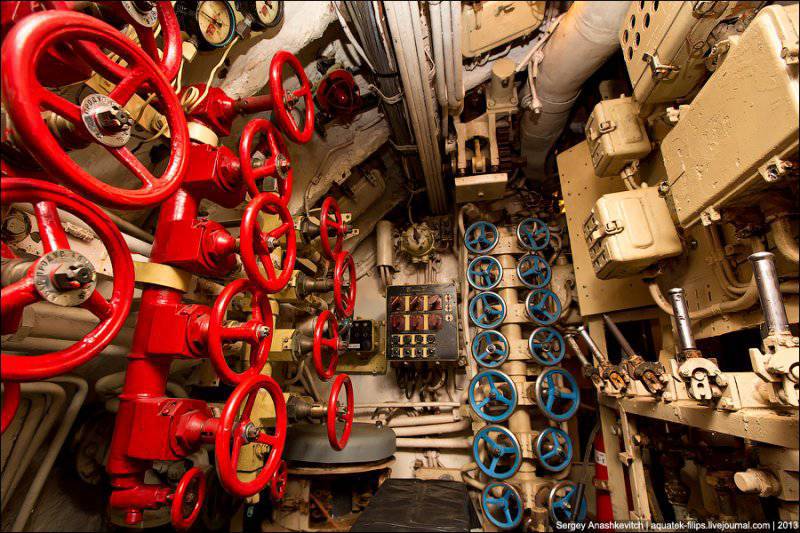
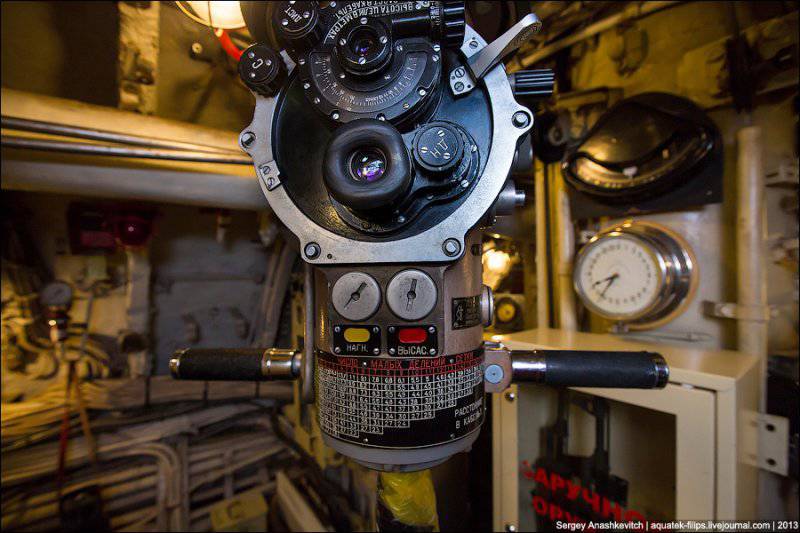
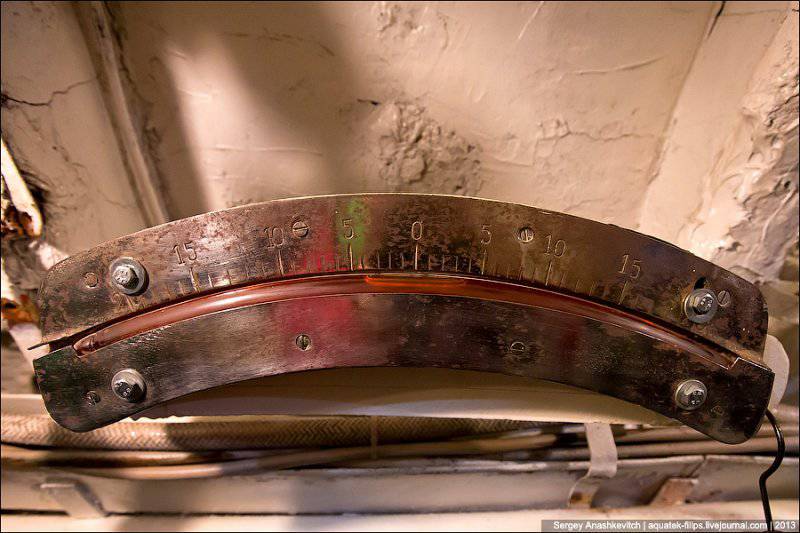
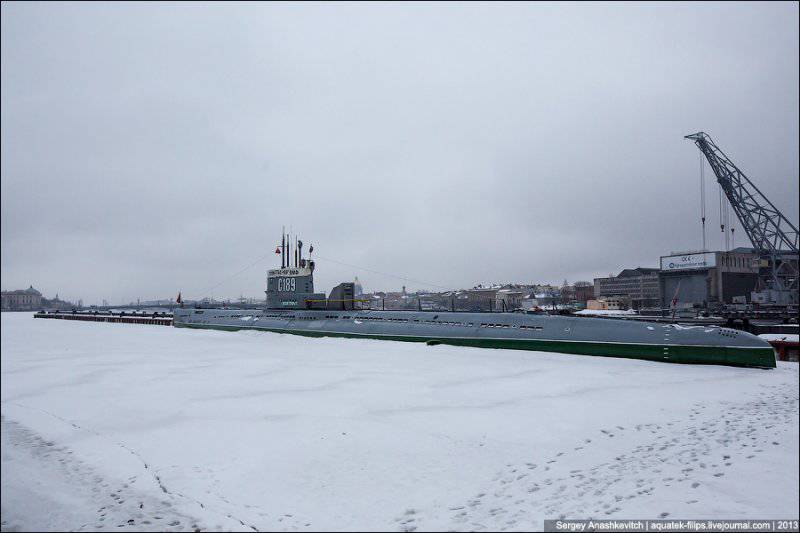
Information